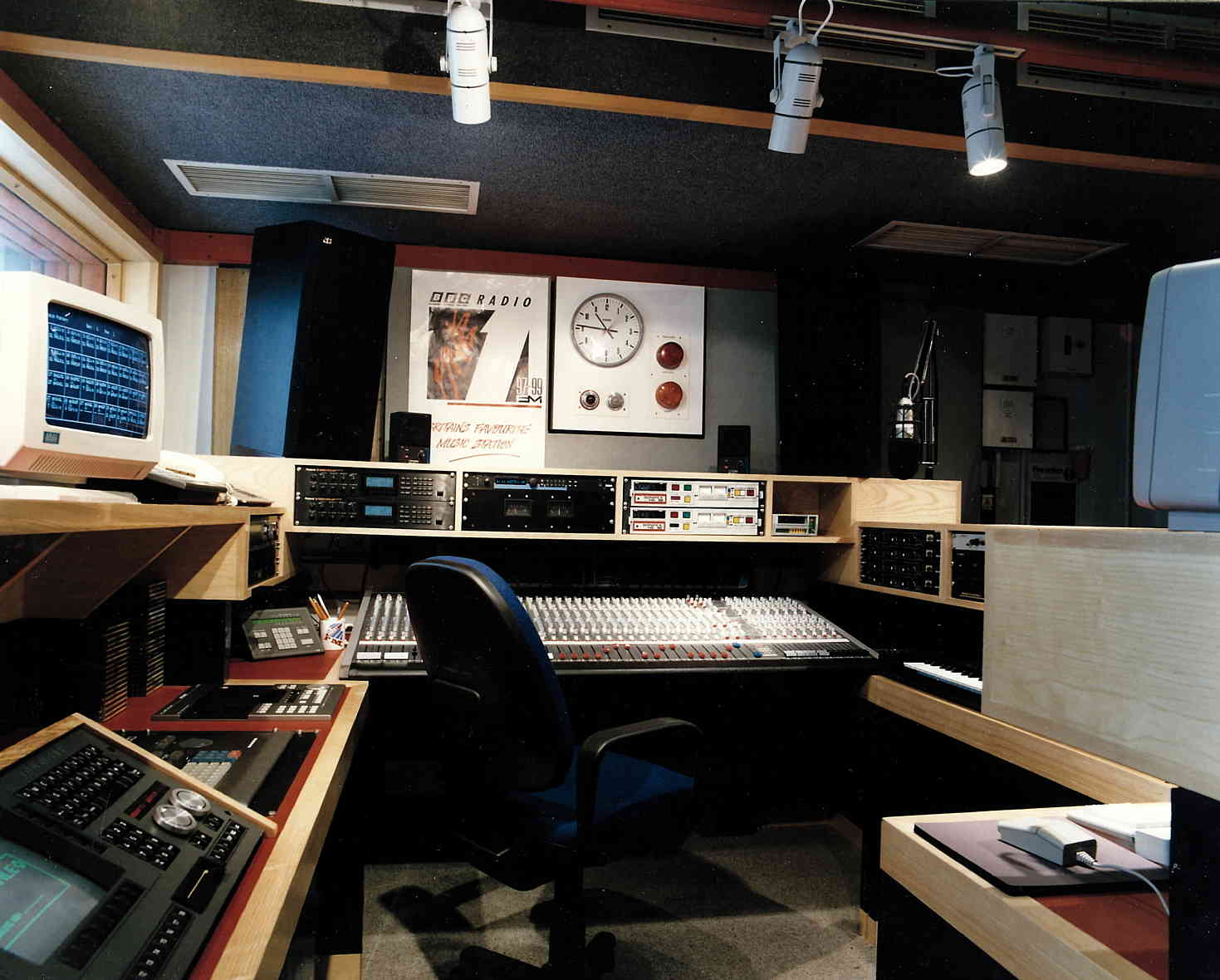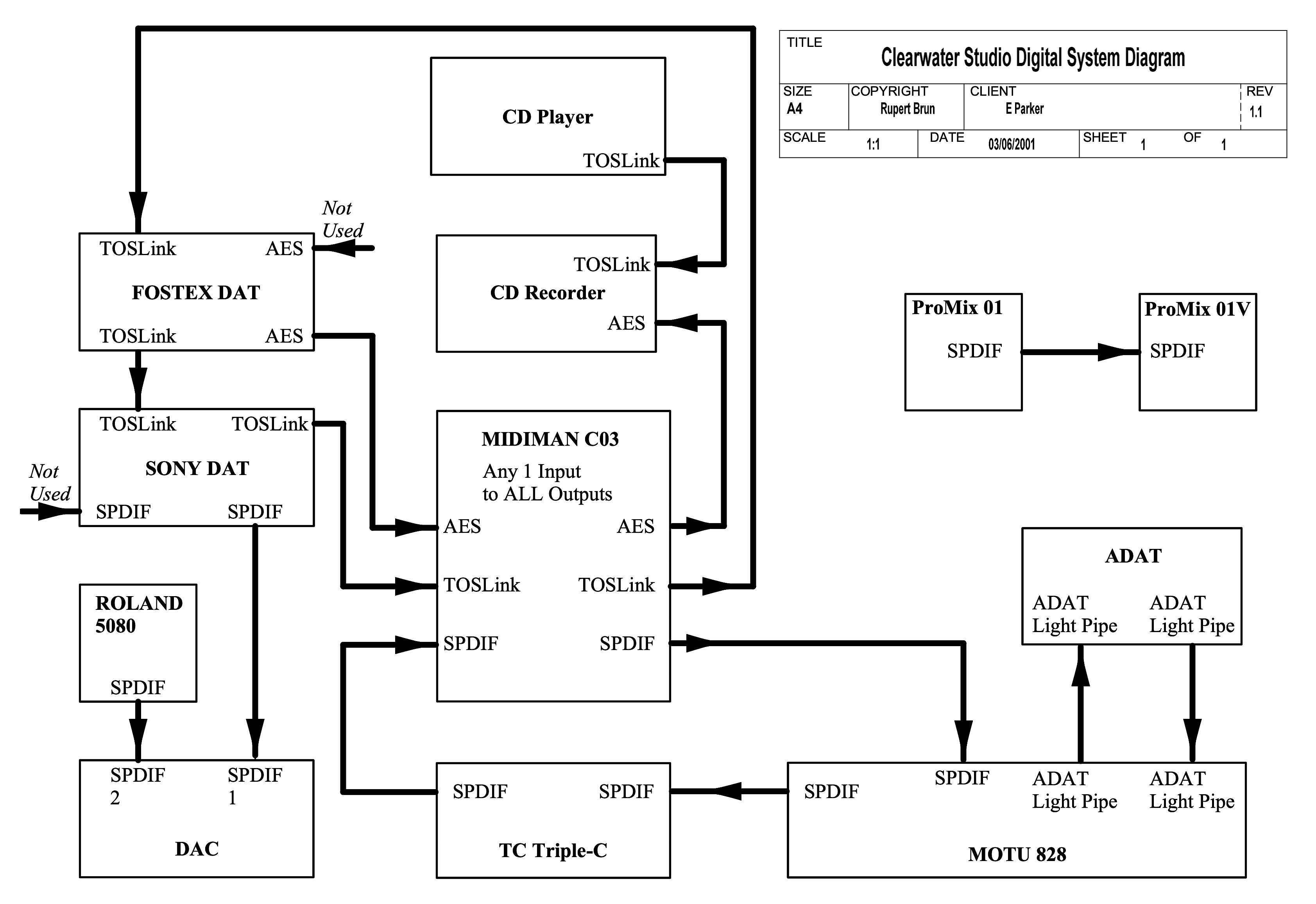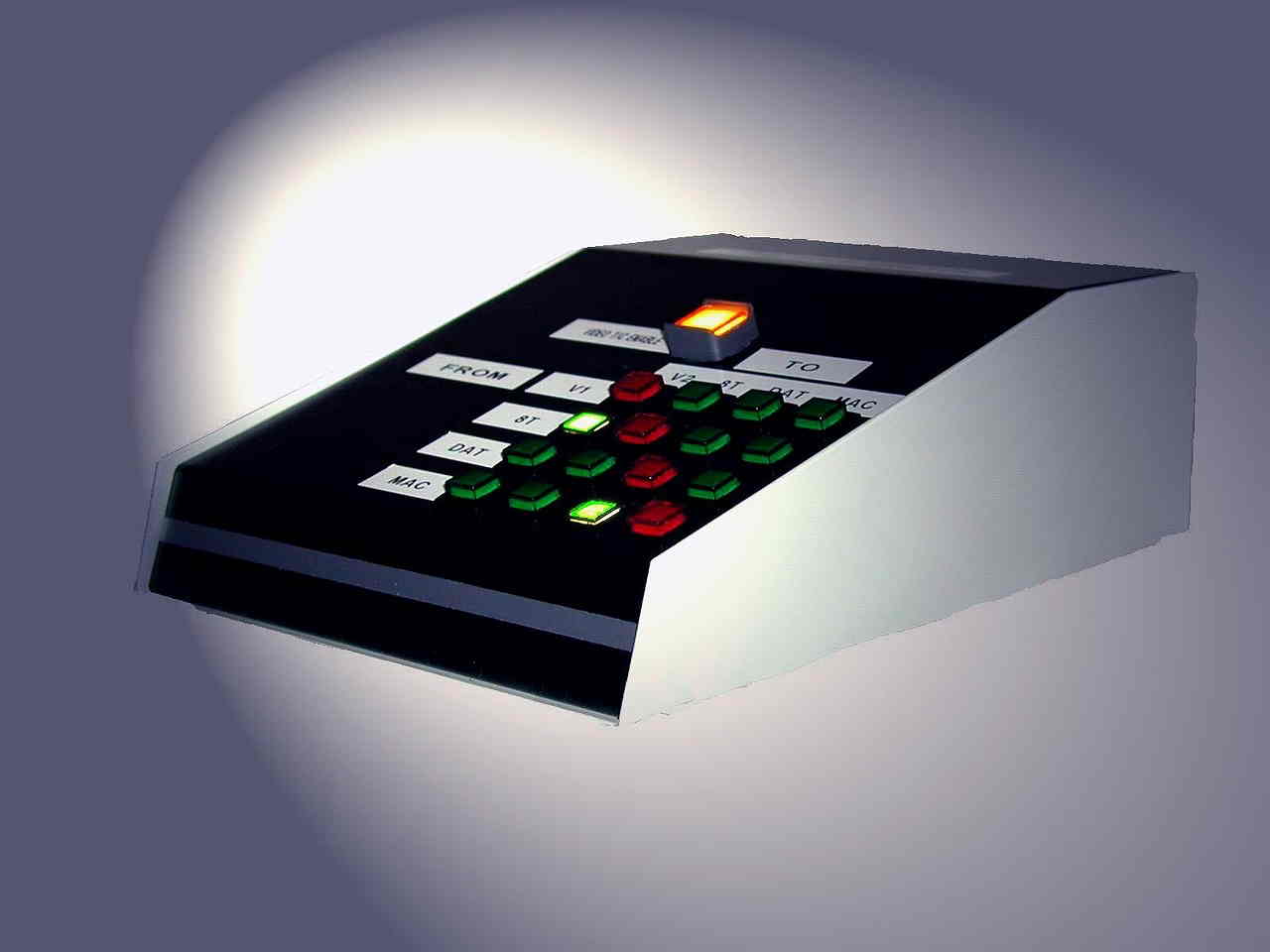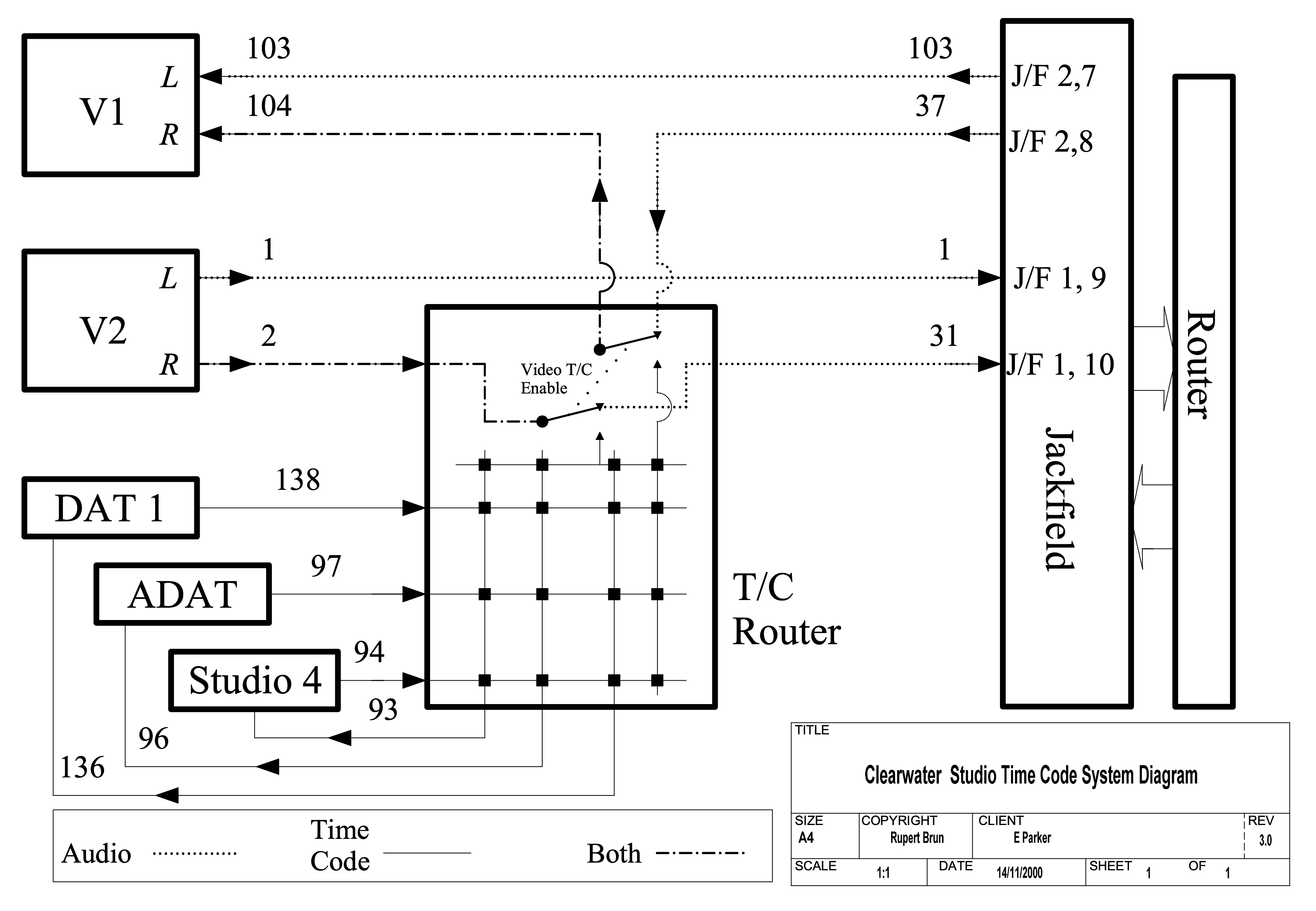
This is a companion to ‘Flexible Working’, an article originally published in 2001 in the magazine Sound on Sound. A facsimile version of this can be viewed in full by clicking here.
Following her hugely successful period of creativity at the BBC Radiophonic Workshop, Elizabeth Parker departed from the defunct department to set up her own studio at home. Peter Howell bravely did an initial installation at Dulwich, using jackfields with phono sockets at the rear and quarter-inch jacks at the front, a good idea for a fast setup. Unfortunately it suffered from mains hum, a common difficulty, and other problems, which took him three days to sort out. Rupert Brun, an engineer with the BBC, was later called in to help.
Rupert: Yes, Peter is brilliant, but not an engineer. All the wires were the same colour, with not a label to be seen, and no meaningful documentation, which made tracing intermittent connections very time-consuming. When Liz asked me to sort it out, the first thing I did was go to Maplin and buy a labelling machine!
At this time, the circular desk from Radiophonic Studio F was found to be too large and was residing in the garage. By 1999, Elizabeth had moved to Long Ditton, where she was to later establish a purpose-built studio. In the meantime, her equipment held temporary residence in the West Country. By 2001, the original setup required a replacement, to be designed and installed by Rupert.
Rupert’s plans were to develop the ideas of Ray White and Ray Riley, as applied to the Radiophonic Workshop, as well as Ray’s work on PPS1, the Programme Presentation Suite used by Radio 1 for the creation of jingles, located in a building adjacent to the BBC’s Broadcasting House.

Ray White was attached to Radio Projects in November 1989, in part to work on this £120,000 project, originally planned to be based on an Atari computer for sequencing and composition, two Akai DP3200 routers, Akai samplers, an existing Audiofile system and a Yamaha DMR8 recorder/mixer, although an Allen & Heath Saber mixing desk was substituted for the latter.
Rupert: If I remember correctly, the ‘prefabricate everything for a rapid refit’ was another of your inventions; do you remember PPS1 in Egton House? I think you project managed it on an attachment to Studio Capital Projects department and I was in Technical Commissioning? Prefabricated in an industrial unit in Wembley. Friday evening, rip out the old, overnight new lights and painting walls and ceiling. Next morning, new carpet, then lorry arrived with prefabricated studio, assemble, test, connect to cable from technical distribution cabinet, back in service for “Chalky” White on Monday morning.
Ray: I wasn’t too happy with the end result of PPS1. I left Radio Projects before it was finished and it ended up a bit uglier than I wanted. I’ve no idea if the customer was really pleased with it in the end or not!
Rupert: They were happy. Yes, ugly, but you managed to get a lot of Radiophonic ideas into a mainstream radio production workshop, including the Akai router, and that was a real achievement on which I was later able to build. Sadly though, they always used the hardware Akai router controller, which was a horrible thing.
Unlike the PPS1 console, which was designed to fit a constricted area and to be equipped with specific devices, the original Radiophonic circular desk was designed to go in any area, space permitting, and could accommodate any type of equipment. This made it particularly suitable for Elizabeth’s studio.
Rupert: It was complex in some ways, building on some of the ideas from Studio F and adding more. The Akai router [DP3200, as used at the Workshop] was controlled by a Peavey controller [PC 1600X Midi Command Station]. The biggest change was having the separate time code router.
The more modern Yamaha desks [01 and 01V] could interface by SPDIF rather than the original Yamaha daisy-chain which caused so many problems when more than 4 mixers were connected. [The Radiophonic Workshop employed the CIU-1, a custom interface unit made by Yamaha, to connect together the older DMP7 mixers]. There was a fair bit of AES and TOSLINK too, with a standard converter to connect the digital stuff in the digital domain.
Liz’s husband Bob took a great interest and supervised the building works: there was even a proper radial earth system for the 13 amp sockets, necessary because of the amount of unbalanced audio on long cable runs. I removed her old studio, assembled the round desk woodwork and completed the wiring between Friday morning and Monday lunch time!

As with the Radiophonic installations, audio circuits took both analogue and digital form. The connections from synthesisers to to the inputs of the two Yamaha mixers, as well as those to and from recording devices, including the ADAT multi-track recorder and its submixer, were available as analogue signals, as shown here:

The digital system, shown below, provided paths between all the digital recording devices, as well as the computer itself via Firewire, using the MOTU 828, an 8-channel device described as a ‘hybrid USB Firewire audio interface’.

Time code signals were conveyed via an independent system, employing a custom crosspoint router created by Rupert, as seen here, along with its wiring:


The full set of studio drawings can be viewed here.
Elizabeth’s entire studio was offered for sale on November 6th, 2004, at the spheremusic.com auction site and was described as follows:
A UNIQUE OPPORTUNITY!
Ex-BBC Radiophonic Workshop (Blake’s Seven, The Living Planet) and current film and TV composer Elizabeth Parker is selling the famous circular studio she took with her from the BBC when the RW was disbanded.
The studio is virtually complete, including nearly all the equipment she has been using on a regular basis in her profession - up to and including a film project she is finishing in the first half of November before the studio is dismantled. Just add a mother keyboard, mastering, monitoring, and video, and you have virtually the complete set- up used for prestigious projects like the BBC’s World Cup coverage, The Human Body, Weird Nature, Animal Olympics, the Monty Python Holy Grail DVD, Michael Palin TV series, etc.
The custom woodwork and cabling alone is believed to have cost £4500 in the late 1980s, and is probably one of the most famous studio designs in the world. When it was removed from the BBC, the installation and re-design at Liz's private studio was masterminded by Rupert Brun, one of the BBC's most highly respected engineers.
Full documentation is included in the sale. Removal and/or packing and shipping is a serious task, so please bear that in mind before bidding. VEMIA will assist at cost if you need.
The studio consists of:
The complete studio was sold for the rather un-princely sum of £2020.
According to Elizabeth’s website she was continuing work at her ‘Central London fully on-line software-based studio’ in 2006.
©Ray White/Rupert Brun 2020.